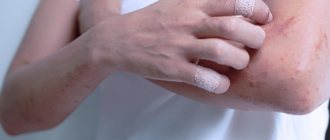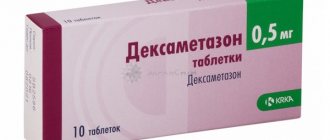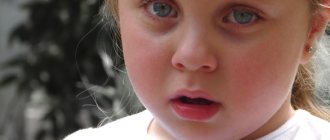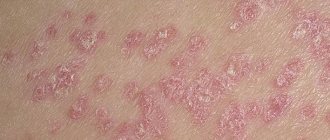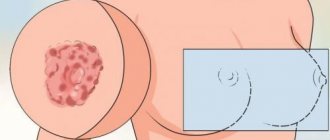Causes of the disease
The main reason that can provoke rhinosinusopathy is advanced and untreated vasomotor or allergic rhinitis .
In addition, people predisposed to allergies are at risk. This can get worse if a person is addicted to taking medications . Drugs can serve as an activator of allergic reactions.
There are certain risk factors that can trigger or accelerate rhinosinusopathy of the brain. The most common are:
- allergic predisposition;
- diseases of the respiratory system that have a chronic course;
- adenoids;
- use of medications without measure and medical supervision;
- poor environmental situation;
- gastrointestinal problems;
- smoking and other bad habits;
- unfavorable production conditions (work in chemical production, in production with increased air dust).
Treatment methods
Treatment of the disease is aimed at eliminating the cause of the disease and local manifestations that cause discomfort to the patient. In this case, be sure to take into account the following points:
- It is necessary to adjust your lifestyle - stop drinking alcohol and smoking (if you have such bad habits). Smoking can have an irritating effect on the mucous membrane, and alcohol may contain various synthetic additives that can provoke an allergic reaction;
- It is constantly necessary to remove dust from the house and regularly carry out wet cleaning of the premises. This is important not only for allergy sufferers, but also for healthy people. If you are prone to allergies, try to remove from your home all objects that serve as dust accumulators;
- Limit as much as possible contact with possible irritants - fumes of chemicals, pollen of flowers and plants, smoke, pet hair, which can provoke rhinosinusopathy;
- Watch your diet. It is not necessary to adhere to a strict diet, but you need to ensure that the products are free of preservatives, dyes and flavors. It is recommended to exclude potential allergens - sweets, confectionery, some fruits and vegetables;
- When choosing drug treatment, the attending physician must take into account the fact that microorganisms can adapt to the effects of antibacterial agents. Most often, the duration of antibiotic therapy is up to 10 days, although adjustments may be required in each individual case;
- If possible, stop using certain medications or at least reduce their dose if your health condition and chronic disease allow it;
- Internal administration of antihistamines. Today the range of these products is very wide. They differ both in their action and in composition, so they are prescribed only by a doctor. 1st and 2nd generation antihistamines often have a sedative effect, so it is not advisable to use them in the treatment of allergic rhinosinusopathy, because the patient already has general malaise and lethargy;
- With this pathology, mucus accumulates in the nasal cavity. In order to eliminate it, vasoconstrictor nasal drops, local antibacterial drugs and agents that allow drainage of the nasal cavity are prescribed. For this purpose, rinsing with sea salt-based products is also used. We must not forget that long-term use of nasal medications is unacceptable, as this contributes to dryness of the mucous membrane and the future development of rhinitis;
- In case of severe hypertrophy of the nasal turbinates or pathology of the sinuses, or the ineffectiveness of drug therapy, surgical intervention can be resorted to.
Do not self-medicate under any circumstances! When choosing any drug, consult with an experienced specialist, strictly adhere to the frequency of administration and dosages of the drugs.
Symptoms of rhinosinusopathy
The main symptom of rhinosinusopathy is deterioration in breathing combined with strong mucous secretion of watery secretion through the nasal route. Frequent attacks of sneezing are possible, weakening towards night. Anxiety causes heaviness in the head and the area around the nose. If the disease becomes chronic, the headache begins to bother you every day, becoming stronger when you tilt your head down.
As a result of an acute process of inflammation of the mucous membrane of the respiratory tract, symptoms such as:
- increased body temperature;
- general weakness of the body;
- worsening sleep and loss of appetite;
- the appearance of irritability, mood swings;
- chills.
In addition to the general symptoms of the inflammatory process, there are also special ones characteristic of rhinosinusopathy of the brain, these are:
- recurrent runny nose, occurring up to 10 times a year;
- swelling of the face;
- heaviness in the head, headaches;
- frequent sneezing, which is accompanied by itching and moderate cough;
- difficulty breathing due to copious mucus secretions.
There are three forms of rhinosinusopathy, varying in symptoms and duration:
- Acute episodic.
- Seasonal.
- Persistent (year-round).
With occasional contact with allergens, acute symptoms of inflammation of the nasal cavity and paranasal sinuses appear. Seasonal rhinosinusopathy worsens during the period of abundant flowering of plants. Year-round rhinosinusitis can last for nine months a year or more often . Children with cerebral rhinosunusopathy experience absent-mindedness , restlessness, poor academic performance, and irritability.
What is rhinosinusopathy of the brain?
For those who have never heard of what cerebral rhinosinusopathy is, the symptoms of this complex disease are clearly unfamiliar. The main ones are systematic inflammation of the nasal mucosa, exacerbation of a disease such as rhinitis and much more.
General clinical picture of the disease
Let's first try together to understand the main causes of this disease in order to be able to prevent it in advance and adequately respond to its first symptoms.
Rhinosinusopathy of the brain can occur due to the most minor factors, the main of which are:
- polluted natural environment;
- work in hazardous production;
- systematic use of medications;
- tendency to allergies;
- bad habits, mainly smoking;
- presence of chronic diseases;
- unstable bowel function;
- adenoids.
It may seem that the listed factors accompany the lives of many of us, but this does not mean that everyone suffers from rhinosinusopathy of the brain.
The fact is that among the listed reasons for the possible occurrence of the disease, there is one main one - this is a person’s predisposition to allergic reactions of various kinds. If a person suffers from allergies, then under certain circumstances, he may well develop the indicated disease.
At the same time, the chance of getting sick increases for those who often take medications that can accelerate the manifestation of allergic reactions in the body.
Therefore, attention should be paid to the presence of the listed reasons that can cause the occurrence of this complex and dangerous disease.
In a healthy person, the sinuses of the brain receive blood from the internal and external veins of the brain. At the first symptoms of the disease, inhibition of this function is observed, and the patient’s general condition worsens.
Main symptoms of rhinosinusopathy
Let us immediately note that the majority of those sick noted that they experienced symptoms that are characteristic of a common cold or flu. The realization that the disease has a different nature comes too late, mainly after rhinitis becomes chronic.
Among the main symptoms of the disease it is necessary to highlight:
- nasal congestion, making breathing difficult;
- copious nasal discharge;
- moderate cough;
- difficulty breathing.
At the same time, the listed symptoms can be observed either permanently or temporarily, directly during exposure to the allergen. Along with the manifestation of these symptoms, the patient feels general malaise, weakness, frequent headaches and sleep disturbances.
Restlessness and decreased performance may also be present. The patient is easily angered and becomes very irritable. If a child gets sick, you can observe signs such as decreased attention, absent-mindedness and irritability.
Learning to identify the disease
At an early stage, the disease is difficult to diagnose. This is due to the fact that the main symptoms may be the result of seasonal illnesses or a common cold. But if you experience discomfort and observe signs of the disease for more than one month, then you should think about a full examination.
After the standard test procedure, you may need to be examined by an ENT specialist using x-rays of the sinuses. In this case, it will be possible to find out the true causes of your disease. If concerns about rhinosinusopathy are confirmed, you will be given the necessary treatment.
Treatment of the disease
The main treatment comes down to ensuring that the patient immaculately adheres to the following rules:
- gave up existing bad habits, including completely eliminating the use of tobacco products and alcohol (additives contained in these products can provoke allergic reactions in the body);
- reduce the use of medications as much as possible, since the components they contain accumulate in the body and can also cause allergies;
- Maintain cleanliness in the home and workplace, and maintain personal hygiene. Measures should be taken to eliminate possible allergens;
- on the recommendation of a doctor, it will be necessary to carry out the prophylactic use of vasoconstrictor drops.
You also need to be prepared for the fact that you will have to undergo antihistamine therapy. At the same time, the drugs that will be prescribed to you should not have a sedative effect. It is better to add vitamins to the list of medications that will help strengthen the body and restore energy to it.
Remember that timely diagnosis of the disease guarantees a speedy recovery.
Source: https://medicineno.com/chto-takoe-rinosinusopatiya-golovnogo-mozga.html
Diagnosis of rhinosinusopathy
In the early stages of the disease, diagnosing it is quite problematic . The symptoms of the disease are similar to the usual seasonal exacerbation of allergies or a cold. It is worth paying attention if manifestations occur frequently and cause concern.
In order to promptly identify allergic rhinosinusopathy, it is necessary to undergo a medical examination by an ENT doctor and an allergist .
The diagnosis is confirmed by allergy tests , such as immunoglobulin testing, skin tests, etc. Examination of the nasal cavity shows swelling of the nasal sinuses and mucous discharge. In the case of a chronic course of the disease, polypous growths in the sinuses and nasal passages are possible.
To make a diagnosis, the following activities are carried out:
- examination of the patient and his interview;
- radiography of the sinuses;
- Rhinoscopy is a method that determines the advanced stage of the disease and the extent of its spread.
Which areas of the nasal cavities are affected can be seen using MRI of the brain . The disease rhinosinusopathy of the brain is not self-diagnosed. Mandatory consultation with specialists is required. If not treated in a timely manner, the disease quickly becomes chronic.
Rhinosinusitis symptoms and treatment in adults
Rhinosinusitis is a disease characterized by inflammation of the mucous membrane of the olfactory organ and paranasal sinuses.
If the disease is treated incorrectly and untimely, or due to the individual characteristics of the body, the disease develops into chronic rhinosinusitis. As the disease progresses, the mucous membrane thickens and an inflammatory process occurs.
On this basis, many people have a question about what it is and what is the treatment for rhinosinusitis in adults.
What is rhinosinusitis?
Rhinosinusitis is a general name for various diseases of the olfactory organ. It is often labeled as an inconclusive diagnosis. Depending on the duration of the suppurative process, acute and chronic rhinosinusitis occurs. After certain studies, the client may be found to have:
- ethmoiditis;
- sinusitis;
- frontitis;
- sphenoiditis;
- hemisinusitis;
- pansinusitis.
Pathology has the following forms:
- Seasonal. The impetus for the progression of pathology is very often ARVI. In the case of a viral infection of the nasopharynx, pathogenic organisms actively multiply in the paranasal sinuses.
- Spicy. Characterized by severe intoxication of the body. The disease is observed for 5-10 days. The patient becomes incapacitated. The temperature rises and pus flows from the nose.
- Chronic rhinosinusitis. This form can last for several months. Symptoms are less pronounced compared to the acute form. The patient tolerates the disease much easier. Due to allergens, the disease can recur.
- The infectious-allergic form appears when an infection enters the pathogenic microflora. Bacteria multiply very quickly in the nasal cavity. The result is severe inflammation. Allergic rhinosinusitis requires a serious approach.
The cause of disease progression may be vasomotor rhinitis, which is accompanied by a runny nose.
Symptoms of the disease
Regardless of the form of the disease, doctors identify several signs that indicate the disease. These include:
- swelling of the mucous membrane;
- nasal congestion;
- weakness;
- malaise;
- pus flows through the nasopharynx;
- pain in the location of the affected paranasal cavities;
- headaches of varying intensity.
If any symptom appears, you should seek help from a doctor.
Acute form
The acute form of the disease is characterized by pronounced symptoms. A couple of days after the disease begins to progress, the patient’s performance decreases, swelling of the face is observed, and paroxysmal pain appears in the head. The signs are:
- nasality;
- weakness throughout the body;
- intoxication of the body;
- decreased sense of smell;
- hyperthermia;
- mild and severe headaches.
Acute rhinosinusitis can be mild, moderate or severe.
Chronic form
The most common causes of this form are:
- excessive drinking;
- improper treatment of the acute form;
- smoking;
- allergy.
The main symptoms of this form are:
- decreased sense of smell;
- nasal congestion;
- hyperthermia;
- nasality;
- increased lacrimation;
- purulent discharge from the nose.
Any symptom should alert the patient, so it is important to consult a doctor. Only the attending doctor can prescribe a course of treatment.
Allergic form
Allergic rhinosinusitis develops after the patient is exposed to various allergens. The signs of this form are:
- redness of the eyes;
- the appearance of clear mucus from the nose;
- the appearance of a rash on the epidermis.
Allergic rhinosinusitis is also characterized by cough and swelling of the throat.
Catarrhal form
This is a viral runny nose that appears against the background of ARVI. The main features are:
- loss of smell;
- swelling of the paranasal sinuses;
- hyperthermia;
- sleep disturbance;
- increased lacrimation;
- a burning sensation in the nose;
- intoxication of the body.
This form is very dangerous for humans. If the disease is not treated correctly, exacerbations in the form of meningitis, pathologies of the upper airways or brain abscess may occur.
Vasomotor rhinosinusitis
This form appears against the background of a cold. Vasomotor rhinosinusitis in adults is manifested by the following symptoms:
- intoxication of the body;
- sleep disturbance;
- weakness;
- runny nose with liquid discharge;
- high hyperthermia.
The pathology cannot be neglected, as it can become chronic.
Purulent rhinosinusitis
With this form of the disease, the symptoms are pronounced. The first signs of the disease include:
- decreased appetite;
- sleep disturbance;
- high hyperthermia;
- severe pain in teeth;
- intoxication of the body;
- purulent discharge.
This form is the most dangerous for humans. It is often complicated by meningitis.
Treatment of rhinosinusitis
In order to cure the disease, you need to seek help from an otolaryngologist. Only a doctor can diagnose the disease and prescribe effective treatment. It is strictly forbidden to resort to self-medication.
Drug therapy
The choice of treatment method depends on the severity of the disease and the personal characteristics of the patient’s body. Drug treatment of rhinosinusitis includes: 1. Taking antibiotics.
This group of medications is prescribed only after the result of a microbiological analysis of the contents of the nasal cavities. Patients are advised to take macrolides, tetracyclines, cephalosporins.
Most effective for rhinosinusitis:
- Azithromycin;
- Amoxicillin;
- Clarithromycin.
The duration of antibiotic use is two weeks. In the case of an acute form of the disease, which is accompanied by high fever, intramuscular administration of medications is indicated.
2. Local application of antibacterial sprays into the nose.
Isofra and Polydexa are the most effective.
3. To eliminate the symptoms of inflammation, antihistamines and corticosteroids are indicated.
4. Treatment of chronic rhinosinusitis includes taking decongestants and vasoconstrictors.
These are the drops:
- Nazivin;
- Rhinonorm;
- Tizin.
Such medications should not be taken for more than 5 days, as the patient becomes addicted. 5. Use of local combination sprays.
These include Vibracil, Rinofluimucil.
6. Taking immunomodulators.
The most effective are:
- Immunal;
- Ismigen;
- Imunorix.
7. The use of mucolytics intended to thin out secretions and normalize outflow.
Such drugs include ACC, Sinupret.
8. Antiphlogistic therapy is indicated for patients.
Patients are prescribed antipyretic medications Ibuprofen and Paracetamol. Only a specialist can prescribe medications.
Surgery
Treatment of chronic sinusitis quite often requires surgery. This occurs when conservative treatment is ineffective. Surgical methods include:
- Puncture of inflamed cavities. This procedure removes pus and helps administer antibacterial medications. In the most refined place of the upper jaw, a puncture is made with a special needle. Wash with antiseptic agents and administer medications.
- Use of the YAMIK catheter. A special rubber catheter with two rubberized balloons is inserted into the nose. They close the nasal cavity, after which the pus is removed using a syringe.
The choice of method depends on the symptoms that appear.
Traditional medicine tips
Rhinosinusitis, the symptoms and treatment of which in adults are different from those in children, can and should be treated at home. The positive side is the fact that the duration of such therapy can be long. How to treat rhinosuinusitis using traditional medicine? The following folk remedies are effective:
- Oak bark decoction. Pour boiling water over 5-10 grams of dried bark. Leave to infuse, then strain and you can begin rinsing the nasal cavities. Thanks to this, the condition of the nasal mucosa is normalized. The recovery process is significantly accelerated. This decoction has an antiphlogistic effect.
- Decoction of calendula and chamomile. Calendula has a beneficial effect on the entire body. Chamomile acts as a strong antiseptic. Calendula can be replaced with St. John's wort or yarrow.
- Application of essential oils. They can be used for inhalation or simply applied to the sinuses. In this case, the patient's breathing becomes easier.
- Composition of salt and soda. Characterized by antibacterial and antiseptic effect. The composition is prepared 1:1 and diluted with 0.25 liters of liquid. It must be hot.
Honey and aloe also help to cope with the disease. Sweet nectar is diluted with warm water and dropped into the nose. Aloe juice relieves nasal congestion. Rhinosinusitis is a disease that requires close attention and proper treatment. Otherwise, severe exacerbations and complications occur. The patient may suffer from symptoms of the disease for several years.
Source: https://zen.yandex.ru/media/id/59f9a0235a104fe1e0d6eaf6/5aa54a638c8be35031660847
